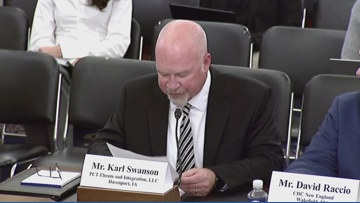Report on Secondary School Placement Appeal and Systemic Challenges
Introduction
Comedian Romesh Ranganathan has recently lost an appeal regarding the secondary school placement of his youngest son. This case highlights significant concerns about the current educational system’s effectiveness, particularly in relation to equitable access to education, aligning with the United Nations Sustainable Development Goal (SDG) 4: Quality Education.
Background
- Romesh Ranganathan, a former maths teacher and current television host, resides in West Sussex with his wife Leesa and their three sons.
- In April, it was revealed that his youngest son was allocated a secondary school place far from their home and different from his older brothers’ school.
- Despite multiple attempts to communicate with West Sussex County Council (WSCC) and contacting the local Member of Parliament, no satisfactory resolution was achieved.
Appeal Outcome and Public Response
- The family’s appeal against the school placement decision was recently rejected.
- Ranganathan expressed acceptance of the decision but emphasized the privilege of their position compared to others facing similar or worse situations.
- He highlighted the particular difficulties faced by children with special educational needs and disabilities, underscoring systemic inequities.
- Ranganathan is committed to raising awareness and advocating for systemic change to improve educational access and fairness.
Official Response from West Sussex County Council
WSCC reported the following:
- 87% of the 9,050 secondary school applicants received a place at their first-choice school.
- Nearly 97% were offered a place at one of their three preferred schools.
- Admissions decisions are based on oversubscription criteria including proximity to home and sibling attendance.
Secondary School Placement Process in England
The allocation of secondary school places follows a structured process managed by local councils, contributing to SDG 10: Reduced Inequalities by attempting fair access to education.
- Parents apply through their local council, listing schools in order of preference.
- Applications typically open on 1 September and close by 31 October the year before the child starts secondary school.
- Admission criteria vary but may include:
- Proximity to the school
- Presence of siblings at the school
- Religious affiliation for faith schools
- Entrance exam results for selective schools
- Attendance at designated feeder primary schools
- Eligibility for pupil premium or service pupil premium
- Parental employment at the school for two or more years
- School offers are sent out on 1 March each year.
- If the first choice is unavailable, an alternative school place is offered, and parents may join waiting lists for preferred schools.
- Parents have the right to appeal decisions within specified deadlines.
Implications for Sustainable Development Goals
- SDG 4 (Quality Education): The case underscores challenges in ensuring inclusive and equitable quality education for all children, including those with special needs.
- SDG 10 (Reduced Inequalities): The appeal highlights systemic barriers that may disproportionately affect disadvantaged families, emphasizing the need for policies that reduce educational disparities.
- SDG 16 (Peace, Justice and Strong Institutions): The transparency and responsiveness of local authorities in school admissions processes are critical for building trust and ensuring justice.
Conclusion
Romesh Ranganathan’s experience brings attention to the limitations within the current school placement system. It calls for concerted efforts by local authorities, policymakers, and communities to enhance the fairness and effectiveness of educational access, thereby advancing the Sustainable Development Goals related to education and equality.
1. Sustainable Development Goals (SDGs) Addressed or Connected
- SDG 4: Quality Education
- The article discusses issues related to secondary school placements, access to preferred schools, and challenges faced by children with special educational needs or disabilities.
- It highlights concerns about the education system not working effectively for many families.
- SDG 10: Reduced Inequalities
- The article mentions the difficulties faced by families, especially those with children with special educational needs and disabilities, indicating inequality in access to education.
- It touches on systemic issues that affect disadvantaged groups.
- SDG 16: Peace, Justice and Strong Institutions
- The appeal process and the role of local councils in school admissions relate to institutional effectiveness and fairness.
- The article shows challenges in administrative responsiveness and transparency.
2. Specific Targets Under Those SDGs Identified
- SDG 4: Quality Education
- Target 4.1: Ensure that all girls and boys complete free, equitable and quality primary and secondary education leading to relevant and effective learning outcomes.
- Target 4.5: Eliminate gender disparities and ensure equal access to all levels of education and vocational training for the vulnerable, including persons with disabilities.
- SDG 10: Reduced Inequalities
- Target 10.2: Empower and promote the social, economic and political inclusion of all, irrespective of age, sex, disability, race, ethnicity, origin, religion or economic or other status.
- SDG 16: Peace, Justice and Strong Institutions
- Target 16.6: Develop effective, accountable and transparent institutions at all levels.
3. Indicators Mentioned or Implied to Measure Progress
- SDG 4 Indicators
- Proportion of children and young people achieving minimum proficiency in reading and mathematics (implied by the focus on school placement and quality education).
- Percentage of secondary school applicants offered a place at their first or preferred schools (explicitly mentioned: “87% offered first choice, 97% offered one of three preferences”).
- Access to education for children with special educational needs and disabilities (implied by the mention of difficulties faced by these groups).
- SDG 10 Indicators
- Proportion of people living below 50% of median income, by disability status (implied by highlighting inequalities in school placement for children with disabilities).
- SDG 16 Indicators
- Proportion of the population who believe decision-making is inclusive and responsive (implied by the appeal process and lack of council responsiveness).
- Timeliness and transparency of administrative decisions (implied by the delays and lack of response from the council).
4. Table of SDGs, Targets, and Indicators
| SDGs | Targets | Indicators |
|---|---|---|
| SDG 4: Quality Education |
|
|
| SDG 10: Reduced Inequalities |
|
|
| SDG 16: Peace, Justice and Strong Institutions |
|
|
Source: uk.style.yahoo.com







